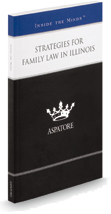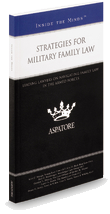Getting a divorce is never an easy process, especially when kids are involved. One of the expected outcomes is split responsibility or joint custody of the children, which is then segregated into a schedule that lawyers typically negotiate on the parents’ behalf. However, there are actually four common types of parental custody that can happen after a divorce, depending on various factors involved.
Child Custody Agreement Types
Four types of standard custody arrangements are used in court and negotiations:
- Full or sole custody
- Third-party or non-parental custody
- Split custody
- Joint Custody
Joint custody agreements are one of the most commonly used in today’s court systems. They are split into different categories, physical and legal custody. Usually, one parent is designated as the primary caregiver while the other parent provides support. The primary caregiver is given legal custody of the child, while the supporting parent is given physical custody when they are with them.
Often, joint custody agreements involve a specific schedule or even specific rules about when the supporting parent can visit and be with their child. A lot of this has to do with how close the parents live in proximity to each other and how well they get along together. Typical schedules might be letting the child stay with the other parent every weekend or every other weekend if the parents are close together. If the parents live further away from each other, the schedule might shift to the legal caregiver having the child over the school year while the other parent takes care of them over the summer. In either case, the schedule is dependent on how well the parents get along and how close they are together.
Sole or full custody involves giving full legal custody to one parent. The other parent would usually not have any right to see their child without at the very least consulting with the primary caregiver. In many cases, however, sole or full custody happens when a parent does something worthy of punishment—typically a crime—and is separated from the family to avoid harming the child. This is not always the case, but if assault or abuse are frequently coming from one parent, then it is not an unusual outcome. Visitation rights, typically under the supervision of either the custodial parent or a special meeting location, are also provided to the non-custodial parent.
Being the custodial parent in a sole custody arrangement means having full responsibility in raising the child and involves education, health care, surname changes, and religious upbringing. The other parent has little to no say about how the child is raised, depending on the relationship of the parents, how they get along with one another, and their history.
Non-parental or third-party custody happens when a non-parent is awarded sole custody of the child and is usually done only under very specific circumstances. This is usually awarded in cases where both parents are deemed unfit to raise the child in some way or if the child has spent the majority of their youth with a non-parental figure. An example of this is if one parent is deemed to be unfit and the other parent dies. In this instance, a non-parent can be designated custody.
Many states adhere to a rule pertaining to parent preference. Under this rule, the parent will almost always get custody unless they are deemed unfit. When deciding if a parent is unfit, the court does more than look at character and past offenses; typically, they will take into account financial stability, credit, assets such as house or vehicle, and how close they are to schools. Many parents might be deemed unfit if they don’t have a stable job or are in conditions unfit for a young child.
The non-parent or third party who is awarded custody varies greatly depending on the situation. It’s common for a grandparent or the godparents of the child to be awarded custody, mainly if that person played an active role in the raising of the child before the separation. Foster care is another option but is usually only done if there is truly no one else left to award custody when both parents are deemed unfit.
People commonly confuse split custody with joint custody arrangements. Split custody has to do when there are multiple children involved in the divorce. This specifically refers to the splitting up the siblings, meaning one of them will go with one parent, and the other will go with the other parent. This is a rare occurrence, as most courts will try to avoid splitting up siblings at all costs unless the parents or the children themselves ask for it. Courts will also take into account the age discrepancy, interest of the child, special needs, and other potential factors.
Which Custody Arrangement Is Right for Your Marriage
Ultimately, the deciding factor will be the history the divorcing spouses have and the will of the children. Clean breaks where the parents are both amiable to each other will often result in much more favorable and shared custody agreements. Lawyers will try to negotiate what both the parents and the children want when they are fighting for custody agreements while trying to remain as unbiased as possible. There are also many cases where one parent is awarded sole custody because the other parent doesn’t have the means to take care of the child after the divorce because they lost the assets that were shared when they were together. In instances such as these, the other parent can renegotiate the custody arrangement if they fix the issues that the court had previously when deeming them unfit.
Regardless of your situation, you should have a lawyer fight for your custody agreements and ensure that you take into account the child’s preferences in the process. Divorces are tough on the children who have just had their parents that they love split up. Because of this, as parents, you’ll need to take extra care of your child’s mental well-being during the process. Contact us to schedule legal consultation in your custody battle today.



